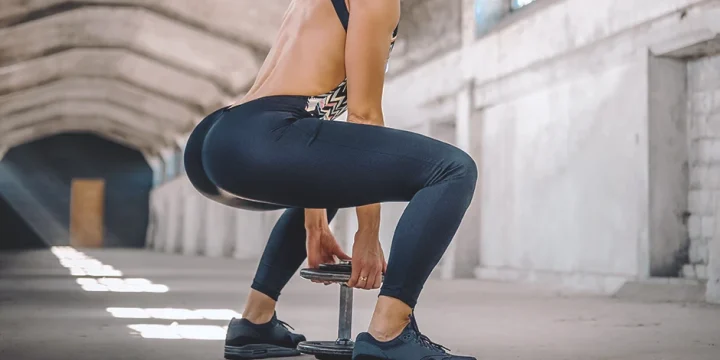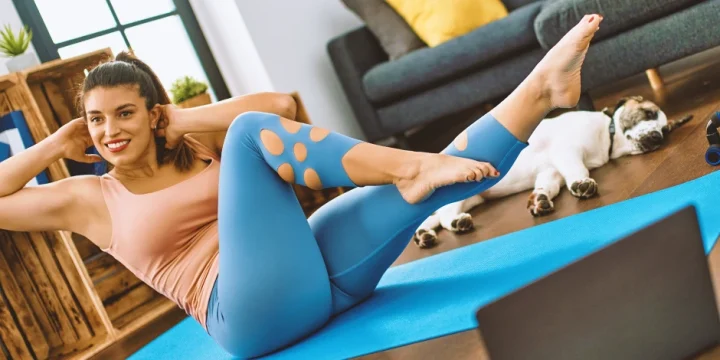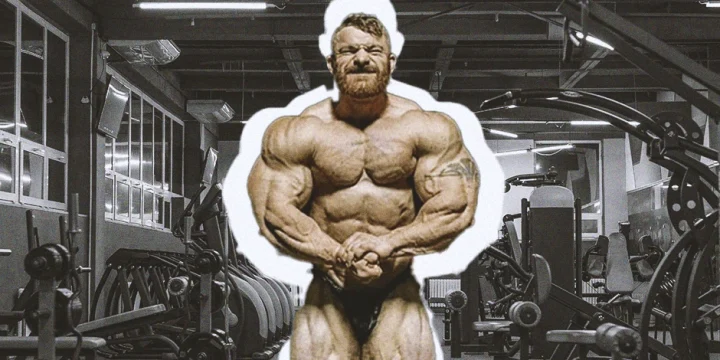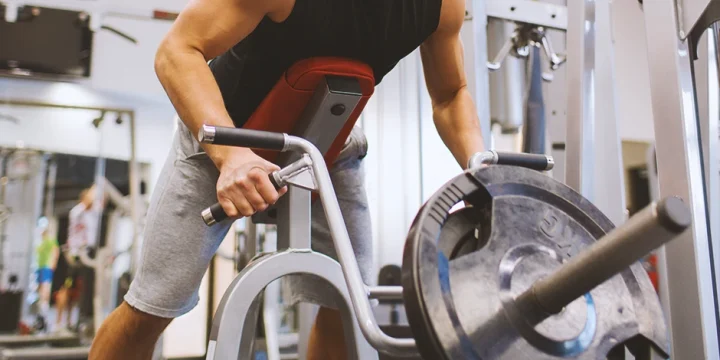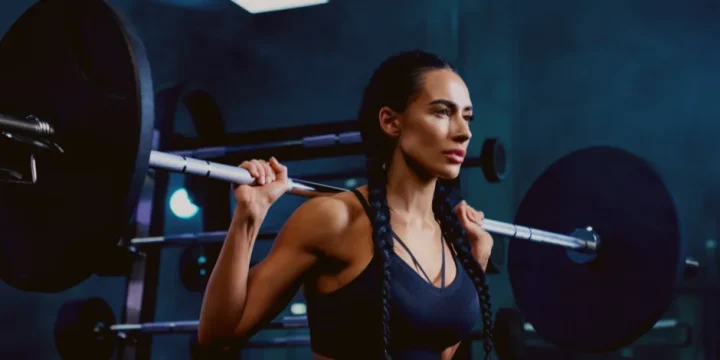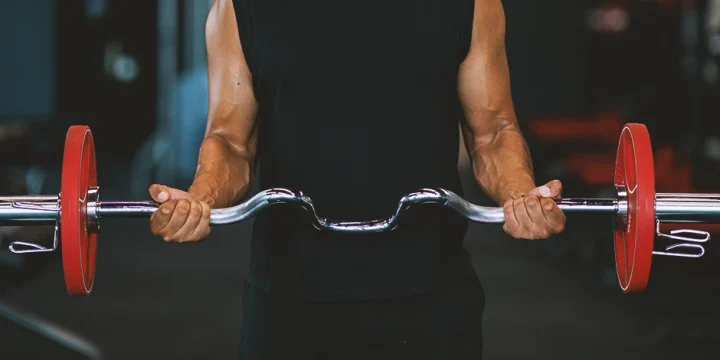Barbell back exercises are all about lifting for strength and muscle growth.
It elicits tension to work on all the different muscles of the back to increase bulk and build strength.
This article will blow the gaff, unlocking the best barbell back exercises that can help you thicken your back muscles and broaden your sides for a leaner and stronger back.
Let's get going.
Quick Summary
- The best barbell back exercises to add to your workout routine include front squats, bent-over barbell rows, good morning, Romanian deadlifts, back squats, and overhead presses.
- Proper warm-up techniques are essential before performing barbell back exercises to prevent injuries, and these warm-ups include exercises like spiderman with rotation, wall slides, and face pulls.
- Rhomboids play a crucial role in supporting shoulder stability and upper limb movements, as indicated by the National Library of Medicine.
- In my opinion, engaging in barbell back exercises not only enhances physical strength but also offers significant psychological benefits, including stress reduction and a boost in self-esteem, demonstrating the interconnectedness of physical and mental well-being.
What Are The Back Muscles That Barbell Exercises Work On?

From my MMA training, I've found that exercises using barbells can work on multiple muscles in your upper, middle, and lower back regions responsible for basic movements such as pushing and pulling.
Strengthening these muscles also plays a significant role in keeping your spine straight and stable [1].
Here are the series of muscles that barbell back exercises can work on:
Upper Back Muscles
- Trapezius or "Traps" - The "traps" is a large triangular-shaped muscle that stabilizes and moves the shoulder blades or the "scapula."
- Rhomboids - The rhomboids are two bilateral, superficial muscles supporting shoulder stability and upper limb movements, according to the National Library of Medicine [2].
- Levator Scapulae - The levator scapulae are superficial muscles of the back that essentially work to elevate the scapula.
Also Read: Levator Scapulae Stretches
Middle Back Muscles
- Latissimus Dorsi or “Lats.” - The lats are a large fan-shaped muscle that stabilizes your spine while allowing shoulder rotation and arm extension.
Lower Back Muscles
- Multifidus - A multifidus is a group of short, triangular muscles that stabilizes the lumbar spine.
- Longissimus - The longissimus is the longest and central erector spinae muscle that helps in neck bending and extension.
- Spinalis - The spinalis is a bundle of muscles and a portion of erector spinae that assists in backward and side bending and supports the rotation of the spine.
- Quadratus Lumborum (QL) - QL is a deep muscle in the lower back that extends from the pelvis up to the lowest rib and helps in stabilizing the pelvis when a person is standing.
Read More: Best Back and Shoulders Workout
What Are The Benefits Of Barbell Exercises for the Back and Upper Body Muscles?

Barbell training enhances upper body strength, including the chest, arms, and abs, crucial for overall lifting ability. In my MMA career, barbell training has not only amplified my upper body strength but also improved my fight posture and reduced my risk of in-ring injuries.
More importantly, it strengthens spinal muscles, vital for bodily support and balance, and contributes to a robust back, improving posture and reducing the risk of lifting-related injuries.
Barbell back exercises play a crucial role in improving posture and spinal alignment, offering a counterbalance to the posture-related challenges of contemporary sedentary lifestyles and contributing to overall spinal health.
Beyond physical strength, engaging in barbell back exercises offers significant psychological benefits, including stress reduction, enhanced mental clarity, and a boost in self-esteem, illustrating the interconnectedness of physical and mental well-being.
What Are the Proper Body Alignments To Observe Before Lifting A Barbell?

Maintaining proper alignment, which I've learned is crucial in MMA for injury prevention, is equally important in barbell lifting.
Also, exuding a good posture that will provide strong body support helps you be more accurate with your movements for faster and more effective results.
Here are some tips:
- Maintain A Shoulder-Width Grip - Holding the bar with your hands directly aligned with your shoulders lessens the tension on your elbows and shoulder joints.
- Squeeze Your Shoulder Blades - Pulling your "scapula" or shoulder blades back and down before lifting the bar activates the chest, back, and shoulder muscles to provide better posture.
- Keep a Strong, Steady Posture - Following a good form of posture like a naturally arched back reduces the amount of stress on your muscles and bones while lifting weights.
What Are The Best Barbell Exercises To Build Back Muscles?
Before we start, make sure you choose the best barbell for your home gym or your specific needs.
From my experience, barbell back workouts can significantly build muscles to develop a stronger back.
Here are some of the best barbell back exercises you can do:
1. Front Squat
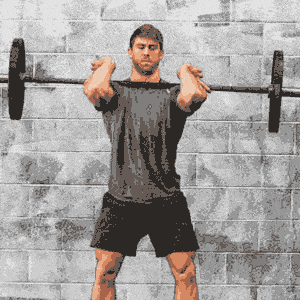
The front squat is a squat exercise performed while holding a barbell in front of the chest. It primarily targets the muscles of the upper back.
Steps To Get It Done
Start by positioning the barbell in front of your chest with the bar across the top of your shoulders.
Clutch the bar with an overhand grip, with hands aligned to your shoulders.
Next, lower your knees and bend at your hips to make a squat until your thighs are parallel to the ground. Keep your chest upright and your abs tight.
Push your body back up to the starting position by stretching your legs.
2. Bent-Over Barbell Rows
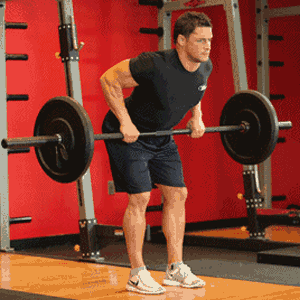
The bent-over barbell row is a multiple-joint workout that works on different muscles.
This exercise primarily works on the rhomboids, lats, and traps. It also activates the core and helps improve the strength of the upper arms.
In my MMA practice, bent-over barbell rows have been essential for building the explosive power needed for clinch work.
Steps To Get It Done
Start by clutching the bar with an overhand grip, shoulder-width apart. Slightly bend your knees and hinge at your hips until your torso is almost parallel to the ground.
Next, pull the bar to touch your upper abs while squeezing your scapula.
Then, slowly lower the bar back down in a controlled manner.
"The barbell row is a great way to develop a strong upper body and add size to your back, and it's the only exercise to work all the different muscles that make up the rear of your torso."
– Tom Wright, Personal Trainer & Fitness Coach at Wright's Karate
3. Good Morning
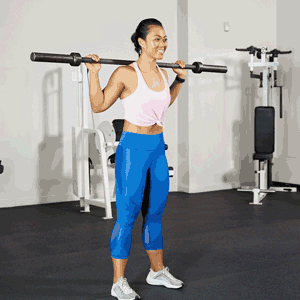
The good-morning barbell exercise is an excellent workout for athletes.
It primarily works to strengthen the entire posterior chain muscles, including the upper traps and lats, to help increase strength and muscle size.
Steps To Get It Done
Stand with your feet shoulder-width apart. Grab the barbell and rest it across the back of your shoulders. Keep your chest upright and core engaged.
Next, breathe deep as you bend forward at your hips, with knees slightly bent and spine neutral.
Then, press up by driving your hips forward and return to the starting position.
4. Romanian Deadlifts
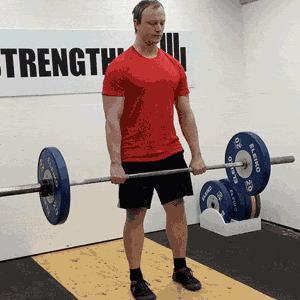
The Romanian deadlift is a conventional back workout of lifting weights.
It primarily works to strengthen the entire posterior chain muscles, including the lats and erector spinae muscles. It is known to be effective in improving posture and grip strength.
Romanian deadlifts have significantly improved my takedown defense in the ring.
Steps To Get It Done
Start by positioning a barbell in front of you. Stand with your feet hip-width apart, and slightly bend your knees.
Lean forward at your hips with your spine straight until your torso extends toward the floor.
Next, hold the barbell with hands at shoulder-width and squeeze your scapula to stabilize your neck and spine. Also, tighten your core and legs.
Then, press firmly on your feet to straighten your legs until the bar is about your upper thighs. Make sure to brace your hips while upright.
To repeat, lower the weight until your torso is parallel to the ground with your knees slightly bent, maintaining a straight back and abs tight. Press back up again.
5. Back Squat
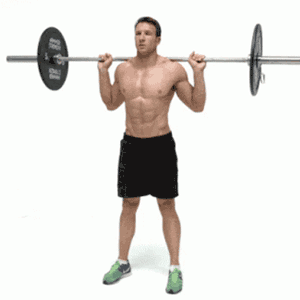
The back squat is a squat exercise performed while holding a barbell at the back of your shoulders. It primarily works on the muscles of the lower back.
Steps To Get It Done
Start by standing with your feet and holding the barbell at shoulder width.
Rest the bar at the back of your shoulder muscles and over your upper traps. Keep your spine straight, abs tight, and chest up.
Next, look down about two meters forward as you slowly descend into a squat.
Then, press on your heels to drive yourself back up.
Repeat.
6. Overhead Press
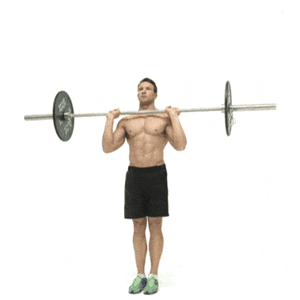
The overhead press is a great back workout exercise that requires strength and balance. It primarily works on the traps and other upper limb muscles.
Overhead presses have been a game-changer for me, enhancing the strength needed for overhead strikes and blocks.
Steps To Get It Done
Start holding a bar on your upper chest, with your feet and hands shoulder-width apart.
Next, keep your abs tight as you press the bar with your arms straight overhead. Pause for a few seconds.
Then, lower the bar close to the chest and return to the starting position.
Repeat.
7. Pendlay Row
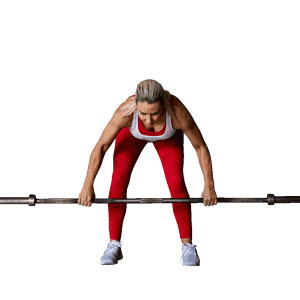
The Pendlay Row is one of the barbell rows that focuses on building back strength and power. It primarily works on the middle and upper back, such as your lats and rhomboids.
Steps To Get It Done
Start by standing behind the barbell, with feet directly aligned with your hips.
Slightly bend your knees as you hinge down at your hips. Hold the barbell with an overhand shoulder-width grip.
Next, pull your scapula back and down to bring your chest up as you lift the bar towards the sternum or the middle of your chest.
Then, lower the weight slowly to return to the starting position.
Repeat.
8. T-Bar Row
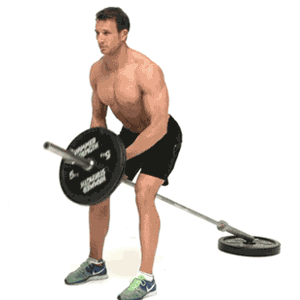
The T-bar row is a simple but effective back-thickening exercise favored by Arnold Schwarzenegger, one of the greatest bodybuilders of all time.
It primarily works on your lats while strengthening your rhomboids and traps.
The T-bar row has been vital in my MMA training for developing the back strength needed in clinch situations.
Steps To Get It Done
Start by holding the end of an empty barbell, add desired weight plates on the opposite end of the bar, and straddle it.
Next, slightly bend over and hinge at the hips until your torso is perpendicular to the ground. Maintain your spine neutral and core tight.
Then, hook a V-grip attachment or a towel under the bar and use both hands to hold it.
Squeeze your shoulders, and begin rowing the bar by pulling it towards the middle portion of your abs. Keep the naturally arched back.
Related:
What Are Some Warm-Up Techniques You Can Do To Prevent Back Muscle Injury?

Physical warm-up techniques are essential to prepare your muscles to lift weights.
It also helps prevent back muscle injuries by mobilizing your muscles, lubricating your joints, and getting the blood in good circulation.
As an MMA fighter, dynamic stretches like wall slides and spiderman with rotation have been key in my warm-ups to prevent back injuries.
Here are some warm-up techniques you can do:
- Spiderman with rotation - Stretching your groin, hips, and leg muscles up to the middle back helps increase thoracic mobility and stabilize your upper limb muscles.
- Wall slides - Mobilizing your shoulder muscles and blades will help strengthen the lower and middle traps to lift weights efficiently and prevent injuries [3].
- Face pulls or band pulls apart - Mobilizing your upper back and shoulder muscles helps strengthen upper limb muscles to increase power and endurance.
Also, focusing on moving the entire body by doing slow-paced jogging, jumping jacks, lunges, bending, twisting, and squats can get your mind and body ready for strength training using barbells
References:
- https://www.goodpath.com/learn/muscles-back
- https://www.ncbi.nlm.nih.gov/books/NBK534856/#:~:text=The%20rhomboids%20are%20important%20in,by%20the%20dorsal%20scapular%20artery.
- https://www.ampfitnessboston.com/blog/technique-overhead-wall-slides-posture
About The Author
You May Also Like
